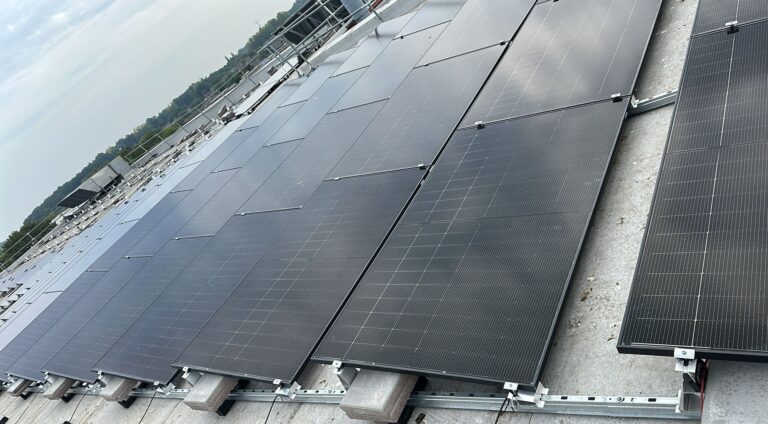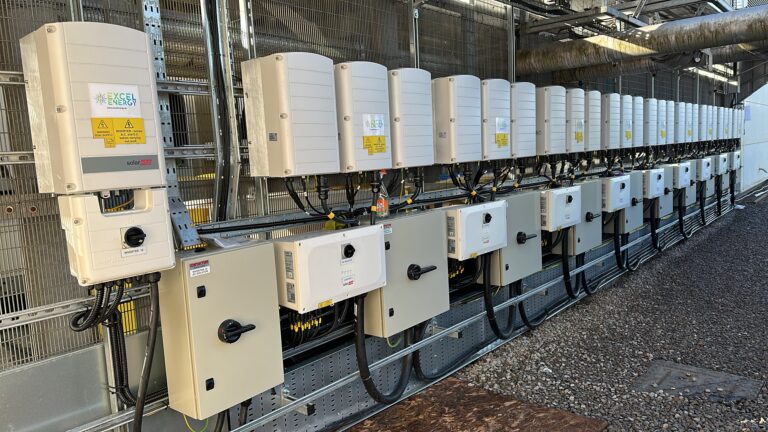Bifacial Solar Panels and Smart Inverters: New Solar Tech for Businesses
Bifacial solar panels are at the forefront of innovation in the UK’s commercial solar market. Over the last decade, commercial solar panels in the UK have changed a lot. Traditional monofacial panels, which used to be the standard, are being replaced by more efficient technologies.
High-output modules, flexible power electronics, and AI-supported diagnostics are altering how solar energy is integrated into commercial energy plans.

Why UK Businesses Are Adopting Advanced Solar Tech
With rising energy prices, increasing carbon reduction targets, and improved access to capital allowances, businesses across the country are embracing commercial solar panels UK technology trends. The aim is better performance, lower operational costs, and stronger energy resilience for the future.
What Are Bifacial Solar Panels?
Bifacial solar panels can capture sunlight from both their front and rear sides. The front side absorbs direct sunlight, while the rear side collects reflected light, also known as albedo, from surfaces like white roofing membranes, tarmac, or snow.
Benefits Over Standard Panels: Higher Output per m²
Compared to standard panels, bifacial commercial solar panels in the UK can boost energy output by 5% to 20%, depending on the environment. This means higher generation per square metre, which is a significant benefit for businesses with limited roof space.
Best Use Cases: Flat Roofs and Reflective Surfaces
Bifacial panels perform exceptionally well in areas with strong light reflection. They are ideal for:
➡️ Flat commercial roofs with white or reflective membranes
➡️ Carports or canopy structures
➡️ Ground-mounted systems in open, unshaded areas
Are Bifacial Panels Right for Your Business?
When Bifacial Makes Sense vs Monofacial
While bifacial panels provide more output, they aren't always the best choice. For example, on pitched roofs with poor rear-side exposure, monofacial panels may still be more cost-effective. However, in the right setting, bifacial systems offer long-term value.
Performance Gains Under UK Weather Conditions
Even in the UK's famously cloudy climate, the best solar panels for businesses must still perform reliably throughout the year. Fortunately, bifacial panels can take advantage of diffused and scattered light, particularly on bright, overcast days.
Space, Cost, and ROI Considerations
The initial cost of installing bifacial systems may be slightly higher, but the increased energy yield shortens the payback period. In sectors like warehousing, logistics, and food processing, the return on investment accumulates quickly.

The Rise of Smart Inverters in Commercial Solar
What Smart Inverters Do
Smart inverters go beyond just converting power. They continuously monitor voltage, current, and grid conditions to optimise performance in real-time. More than just an efficiency tool, they serve as the brain of the solar system.
Key Benefits: Fault Detection, Better Yield, Remote Diagnostics
With smart inverters for commercial solar in the UK, businesses can:
➡️ Detect and isolate faults faster
➡️ Improve overall system yield
➡️ Monitor performance remotely
➡️ Enable safer shutdowns during emergencies
Leading Inverter Brands and Tech in the UK Market
Market leaders like SolarEdge, SMA, Fronius, and Huawei are driving innovation with features such as module-level optimisation, cloud-based monitoring platforms, and AI diagnostics.
How Smart Tech Improves Efficiency and ROI
Live Performance Tracking Equals Better Maintenance and Uptime
Smart inverters simplify the identification of underperforming panels, ensuring minimal downtime. This increase in solar efficiency for UK businesses directly translates to better energy savings and fewer surprises.
Integration with Battery Systems or EV Charging
Another advantage is seamless integration with battery storage and electric vehicle infrastructure. This means businesses are not only generating power but also managing and distributing it wisely.
Long-Term Financial Impact with Smart Upgrades
Although smart technology may increase initial costs, it typically lowers the Levelised Cost of Energy over time, leading to higher returns and better long-term planning.

Combining Bifacial Panels and Smart Inverters Equals Maximum Output
Why These Two Technologies Complement Each Other
Pairing bifacial panels with smart inverters creates a high-efficiency system that maximises solar yield under various conditions. Bifacial panels generate more energy, while smart inverters ensure that none of it is wasted.
Scenarios: Warehousing, Retail Parks, Data Centres
In energy-intensive environments like data centres or cold-chain warehouses, optimising commercial solar systems in the UK becomes essential. This combination allows businesses to reduce reliance on the grid and stabilise long-term energy costs.
Future-Ready Solar Infrastructure
Together, these technologies lay the foundation for advanced solar ecosystems that can respond to future energy demands, carbon regulations, and evolving technologies like AI and IoT (Internet of Things)
UK Innovations and What to Watch in 2025+
Upcoming Trends: Perovskite Layers, AI-Optimised Solar
Research into perovskite tandem cells promises even higher efficiencies, while AI is starting to predict system performance and adjust inverter behaviour in real-time.
UK-Based R&D or Manufacturers
Companies like Oxford PV are making significant strides in solar power research, and UK universities are leading studies into hybrid systems and materials. The landscape is changing rapidly.
Predictions for Commercial Solar Advancements
Expect to see more smart grids, decentralised energy sharing, and the commercial solar panel landscape in the UK focusing on agility, modular upgrades, and smart control systems.
Looking to upgrade your business’s solar setup? The future is already here. By integrating bifacial panels and smart inverters, you’re not just installing solar; you’re investing in a smarter, more profitable energy strategy.
